Roboboat Competition: Embry-Liddle Boat Wins
Navigating a floating obstacle course with aplomb, an autonomous LiDAR-equipped boat from Embry-Riddle Aeronautical University captured first place overall at the 7th Annual International RoboBoat Competition in Virginia Beach, Virginia.
Outfitted with Velodyne’s HDL-32E LiDAR sensor, the pilot-less Embry-Riddle vessel crossed the finish line ahead of the 12 other teams participating in the event, which was sponsored by the Office of Naval Research, the AUVSI (Association for Unmanned Vehicle Systems International) Foundation and several industry partners. The race is the precursor to the Maritime RobotX Challenge, a major AUVSI competition in Singapore.
Central to the competition was the successful navigation of an obstacle field. The Embry-Riddle team mounted the sensor on its boat and was able to navigate through the obstacle course with precision, well ahead of the other competitors. The HDL-32E from Velodyne’s LiDAR Division is part of a growing family of solutions built around the company’s Light Detection and Ranging technology.
“Our performance in the RoboBoat competition was made possible by the amazing Velodyne sensor, which provided us the necessary edge over the other teams,” said Hitesh V. Patel, Research Associate at Embry-Riddle. “Our win in Virginia Beach has paved the way for the RobotX team in Singapore. The Velodyne HDL-32E is such an impressive sensor, and we’re delighted at the initial outcome of this partnership.”
“Our 3D LiDAR sensors guide autonomous vehicles on land, on the seas and in air, and our hats are off to Embry-Riddle University,” said Wolfgang Juchmann, Director of Sales & Marketing, Velodyne LiDAR division. “We’re recognized worldwide for developing real-time LiDAR sensors for all kinds of autonomous applications, including 3D mapping and surveillance."
"With a continuous 360-degree sweep of its environment, our sensors capture data at a rate of 1.3 million points per second, within a range of 100 meters – ideal for taking on obstacle courses, wherever they may be. Still, it’s up to users to implement the sensor and adapt it to their specific environment. That’s why Embry-Riddle deserves such kudos, and why we’re so looking forward to the Maritime RobotX competition in Singapore later this summer.”
Pictured: The Embry-Riddle team (from left): Hitesh V. Patel (Research Associate), Christopher Kennedy (Research Associate), Tim Zuercher (Research Associate)
http://www.velodynelidar.com
http://www.erau.edu/


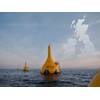
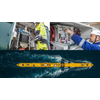
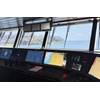
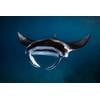
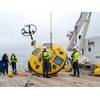






 August 2025
August 2025



